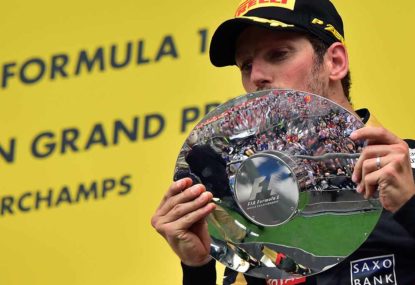'Welcome back': Reliving the last Chinese Grand Prix ahead of its much-anticipated return five years later
Five-years is a long time in motorsport, let alone the general state of the world – especially given the impact of the Covid-19 pandemic…

It’d be fanciful to suggest that Europe is on the precipice of taking back Formula One, though confirmation that the French Grand Prix will return to the calendar in 2018 is a pleasing development in the face of the sport’s relentless expansion into unassuming markets.
A decade following the latest iteration of the event, at Magny Cours in 2008, the country will resume its place at a revived Paul Ricard, which last appeared in 1990.
Renault chief executive officer, Cyril Abiteboul, and McLaren racing director, Eric Boullier, represented key conduits in the negotiation process.
A five-year agreement ensures the timely announcement, lost amidst the fallout of Nico Rosberg claiming the World Championship and his subsequent retirement, won’t amount to a fleeting revival.
The French manufacturer’s return to Formula One in its own right in 2016 ostensibly played a critical role in the outcome. Furthermore, Esteban Ocon’s impending presence in competitive machinery at Force India – with a potential berth at Mercedes in the foreseeable future – will afford the country handsome lead time to harvest the nationalistic pride for which they are famed.
As one halcyon European venue prepares to return, complementing the Austrian Grand Prix’s resurfacing in 2014, this is offset by the uncertainty surrounding the future of the German Grand Prix, which is no guarantee to feature on the calendar in 2018. Despite Mercedes’ recent stranglehold on the sport, coupled with Rosberg’s title – notwithstanding his departure – the country’s lukewarm fervour post-Michael Schumacher leaves little room for sentiment.
Though Monza recently ratified an agreement to continue staging the Italian Grand Prix, suggestions that Imola was prepared to fill the breach has piqued enthusiasm for the venue to return, even if under the previous ‘San Marino’ or multifarious ‘European’ Grand Prix moniker.
The notion of operating in tandem with a German event at Hockenheim every other year carries appeal. Simultaneously restoring an iconic event, while affording another the opportunity to continue in some capacity, most pertinently, it’d sustain a European slot on the calendar.
With the looming absence of the Malaysian and Singapore Grands Prix, there will be avenue for ‘new’ old circuits to feature without congesting the calendar which encompassed a dizzying twenty-one events in 2016, nor jeopardising plans Liberty Media inevitably wish to enact upon assuming full autonomy of the sport in the coming twelve months.
Further afield, the Mexican Grand Prix has enjoyed strong support since its return to the calendar in 2015, bolstered by Sergio Perez’s resurgence in recent seasons, thus the solution isn’t necessarily found in tapping into new demographics.
Circumstances aren’t always right, though it doesn’t mean they never will be, thus it’s pleasing to witness ‘native’ venues, carrying greater resonance to the wider fan-base enjoying a look in, as opposed to an oil rich state with little interest in the racing component.
A renaissance of countries and respective circuits returning to the calendar as though old friends certainly aids the nostalgia factor which Formula One has been left so wanting for in recent times.
Between upheaval on the aerodynamic regulation front beckoning, with the outcome hopefully reminiscent on an aesthetic front of the beastly 1990s machinery and the promise of some old favourites resurfacing, following fans’ growing indifference since the turn of the century, there’s plenty to like about where the sport is headed.